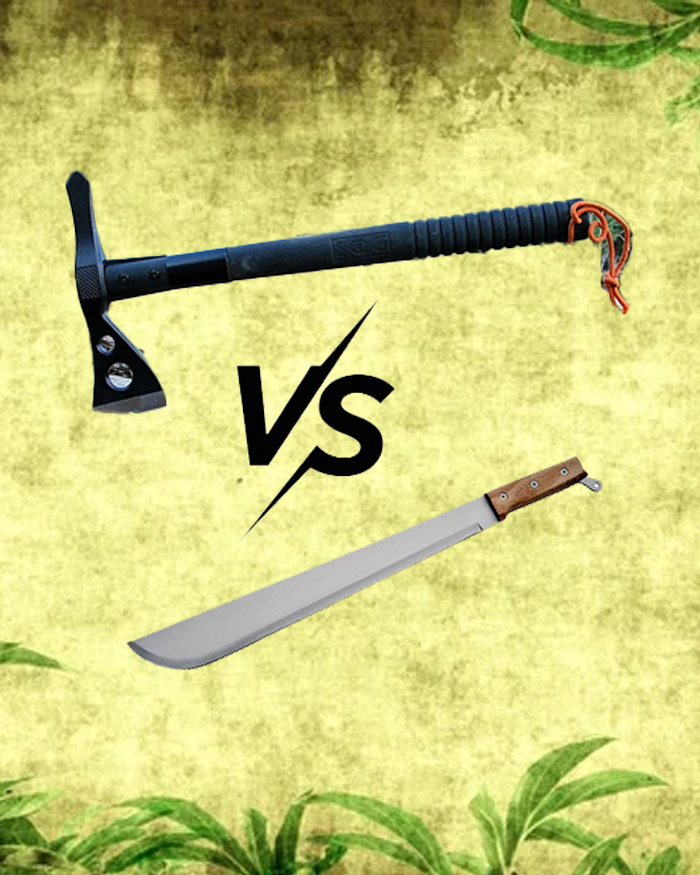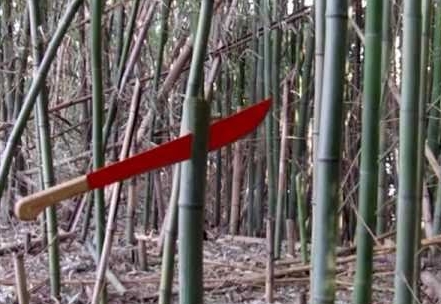Machete Designs – Which One is the Most Efficient?
Table of Contents
Machete Designs – Which One is the Most Efficient?
Available in different designs, a machete is the best large-bladed tool used for cutting tasks for a long time. Here are the most common machete designs.
The Classic Machete Design
The classic machete design features a long, straight blade with a sharp edge that tapers to a point. The blade is typically made of durable high-carbon steel, which retains a sharp edge even after heavy use. The handle is usually made of wood, plastic, or rubber and is designed to provide a comfortable grip even when the user’s hands are wet.
This design is popular because it is simple and effective. The long, straight blade is ideal for cutting through thick vegetation, while the pointed tip can be used for piercing and digging. The blade’s width also makes it useful for chopping and splitting wood, making it a versatile tool for outdoor enthusiasts.
The Kukri Machete Design
The Kukri machete design is characterized by its distinctive curved blade. The curve allows for more leverage when chopping, making it easier to cut through tough materials. The Kukri design is trendy in Nepal, where it has been used for centuries as both a tool and a weapon.
The Kukri machete is an excellent choice for heavy-duty chopping tasks, such as clearing brush or chopping wood. The curve of the blade also makes it helpful in slicing and dicing, making it a versatile tool in the kitchen.
The Billhook Machete Design
The billhook machete design features a curved blade that hooks at the end. The blade’s curve allows for more leverage when chopping, making it easier to cut through tough materials. The hook at the end of the blade helps pull branches out of the way, making it an excellent tool for clearing brush.
The billhook machete design is also famous for harvesting crops, as the hook at the end of the blade can pull fruit and vegetables off of vines without damaging them. This design is popular among gardeners and farmers for its versatility and efficiency.
The Panga Machete Design
The Panga machete design features a short, wide blade ideal for heavy-duty chopping tasks. The blade is usually made of durable high-carbon steel, which retains a sharp edge even after heavy use. The handle is typically made of wood, plastic, or rubber and is designed to provide a comfortable grip even when the user’s hands are wet.
The Panga design is trendy in Africa, where it is used for everything from chopping firewood to cutting through thick brush. Its short, wide blade makes it ideal for heavy-duty chopping tasks, and its curved edge allows for more leverage when chopping.
How to Choose the Most Efficient Machete Design?
The classic machete design is an excellent option if you need a versatile tool to handle various tasks.
The billhook machete design is ideal if you need a tool for harvesting crops or clearing vines.
When choosing a machete, it is crucial to consider the blade material and handle design. High-carbon steel blades are durable and retain a sharp edge, but they can rust if not properly cared for. Handles made of wood, plastic, or rubber are comfortable to grip but can become slippery if wet.
Final Words
Choosing the right machete design is crucial for any outdoor enthusiast or adventurer. It can mean the difference between a successful outdoor experience and a frustrating one. With so many designs available, it’s important to consider your specific needs and intended use of the machete. Whether you need a machete for chopping through dense jungle foliage, clearing a path on a hike, or survival situations, a machete design will fit your needs. By researching and choosing the right design, you’ll be well-equipped to tackle any outdoor challenge quickly and confidently. So go forth and conquer the wilderness with the right machete in hand.
Frequently Asked Questions (FAQs)
How Can I Sharpen My Machete to Ensure Optimal Performance?
To sharpen your machete, you can use a sharpening stone or file. Start by holding the machete at a 20-degree angle and then apply pressure as you drag the stone or file along the blade’s edge. Repeat the process until you have the desired sharpness.
Can a Machete be Used For Chopping Down Trees or Thick Branches?
A machete can be used for chopping down trees or thick branches, but choosing the right type of machete for the job is essential. A heavy-duty machete with a thick spine is recommended for this task.
How to Transport My Machete Safely When Traveling or Hiking?
When transporting your machete, ensure it is secured in a sheath or cover. If you travel by car, keep it in the trunk or secured to the roof rack. If you are hiking, use a backpack with a designated pocket for the machete or attach it to the outside of the backpack using straps.








